Sony XDR-F1HD Seeeduino Modification
 This graph was obtained by using the "S" option numeric data dump at 100-kHz intervals with the numbers entered into Lotus Works Chart Maker and the two (88-98 MHz and 98-108 MHz) graphs
being joined and calls added with PSP4 - an admittedly-arduous process not likely repeated.
This graph was obtained by using the "S" option numeric data dump at 100-kHz intervals with the numbers entered into Lotus Works Chart Maker and the two (88-98 MHz and 98-108 MHz) graphs
being joined and calls added with PSP4 - an admittedly-arduous process not likely repeated.
After the graphic interface was implemented (again, more extensive there now than when I did it in Sept 2012) some of these initial results were obtained (the saved png images, with date stamp dd-mm-yyyy, were modified in PSP4, with the calls and freqs being added)
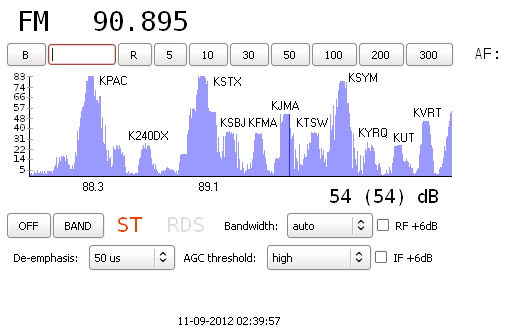
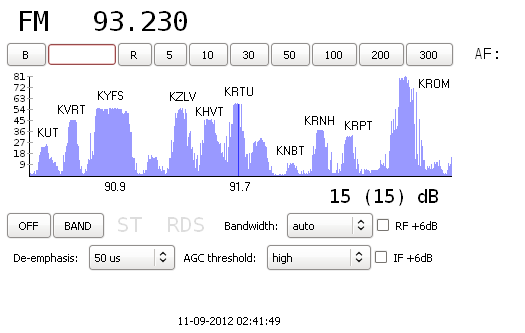
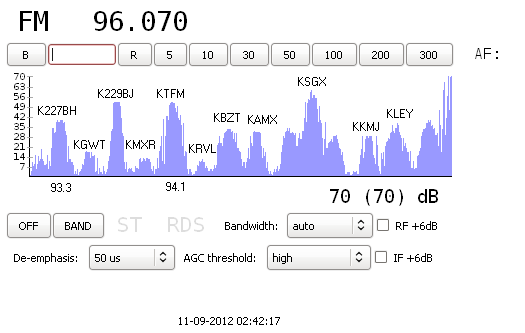
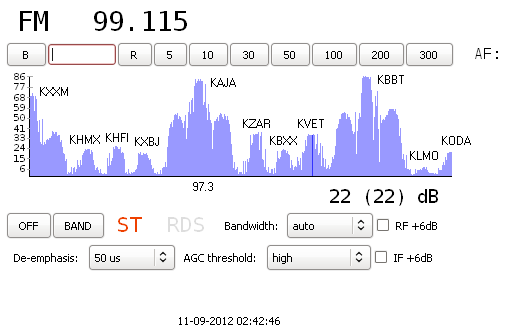
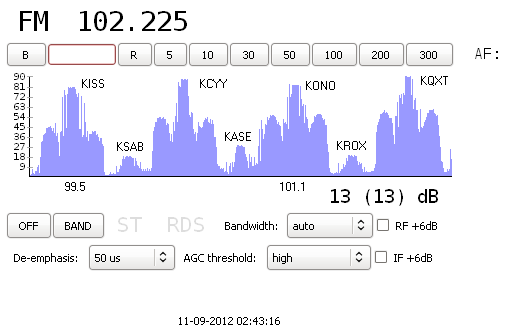
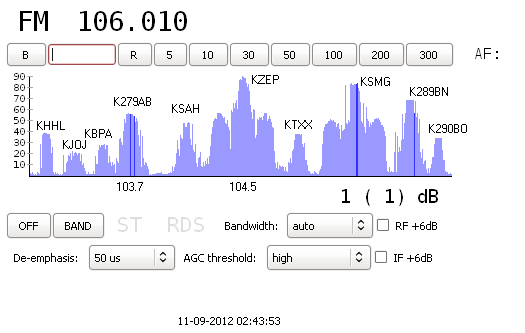
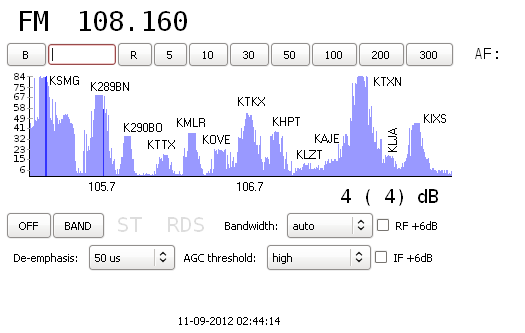 On each set of these graphs the IBOC (HD) "sidebands" of the locals are very evident.
On each set of these graphs the IBOC (HD) "sidebands" of the locals are very evident.
98-108 MHz scan Sept-08-2012 - 1914 CST (the dynamic vertical scale continually adjusts to just fit in the max signal level on the display)
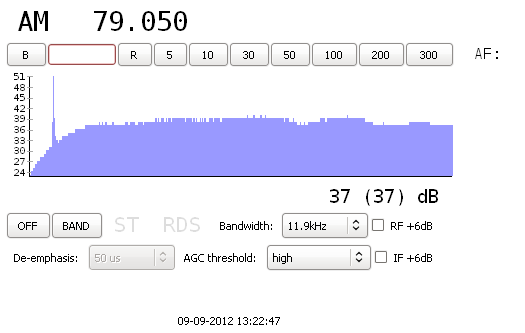 scan showing part of ATSC (DTV) KCWX-DT-5 (76-82 MHz) with prominent pilot at 76.310
scan showing part of ATSC (DTV) KCWX-DT-5 (76-82 MHz) with prominent pilot at 76.310
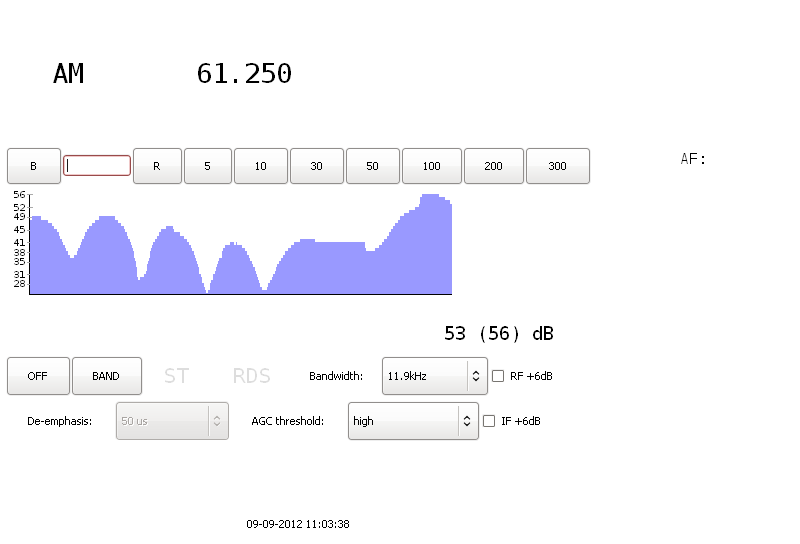 showing fading effects (mostly due to aircraft)
on XHPN-3's 61.250 NTSC video carrier
showing fading effects (mostly due to aircraft)
on XHPN-3's 61.250 NTSC video carrier
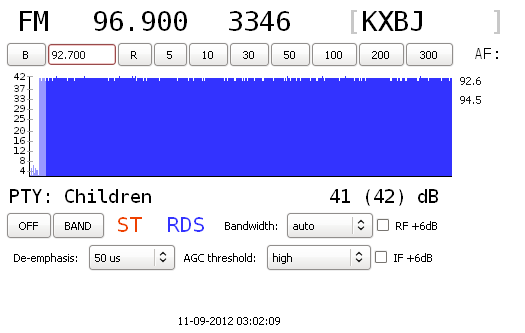 RDS decoding on KXBJ 96.9
(European PTY set so not matching US system)
RDS decoding on KXBJ 96.9
(European PTY set so not matching US system)
(the following png images have had text added to them with PSP4)
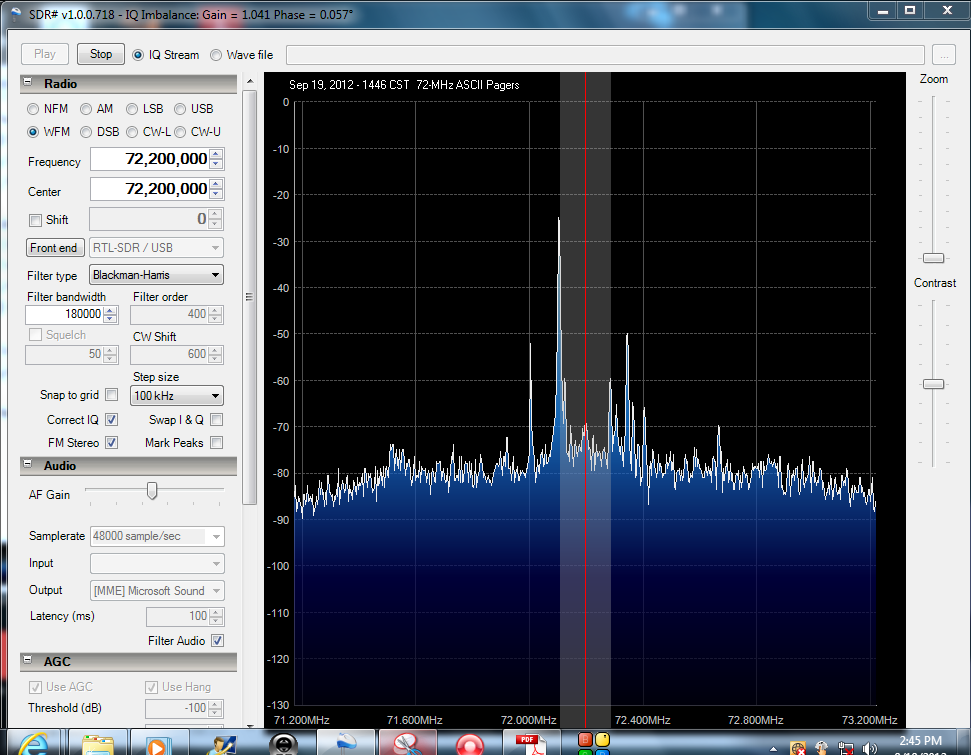 SDR# display showing ASCII pagers between Ch 4 and Ch 5 (72-MHz) - Sept 19, 2012
SDR# display showing ASCII pagers between Ch 4 and Ch 5 (72-MHz) - Sept 19, 2012
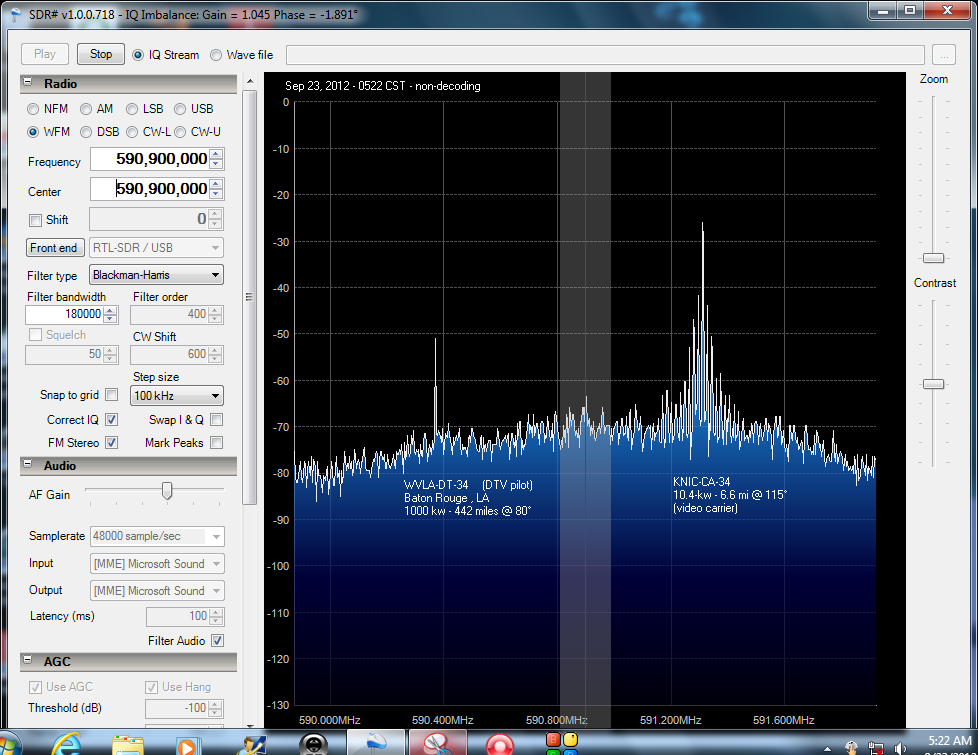 SDR# display showing WVLA-DT-34 pilot (non-decoding) and local KNIC-CA-34 NTSC video carrier - Sep 23, 2012
SDR# display showing WVLA-DT-34 pilot (non-decoding) and local KNIC-CA-34 NTSC video carrier - Sep 23, 2012
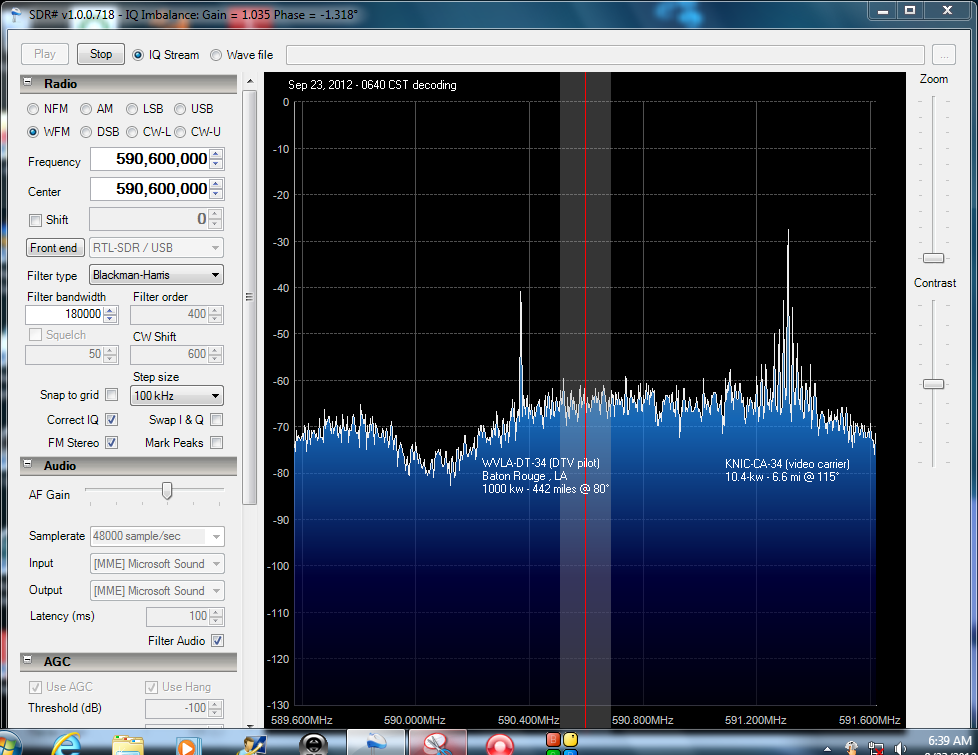 SDR# display showing WVLA-DT-34 pilot (decoding) and local KNIC-CA-34 NTSC video carrier - Sep 23, 2012
SDR# display showing WVLA-DT-34 pilot (decoding) and local KNIC-CA-34 NTSC video carrier - Sep 23, 2012
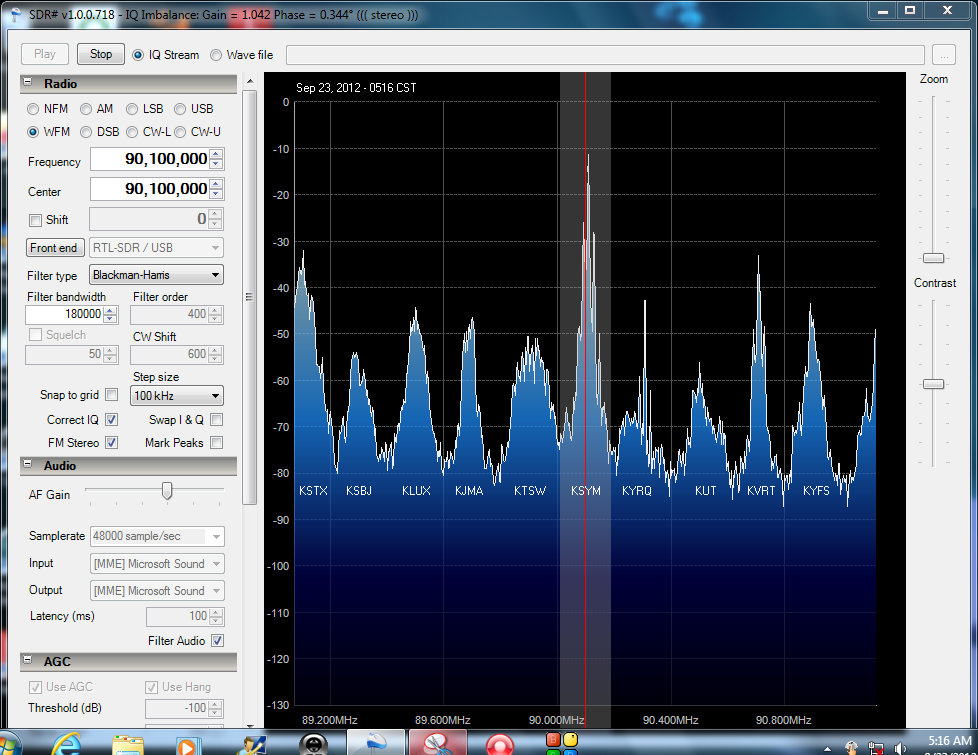 SDR# display 89.1-90.9 MHz - Sept 23, 2012
SDR# display 89.1-90.9 MHz - Sept 23, 2012
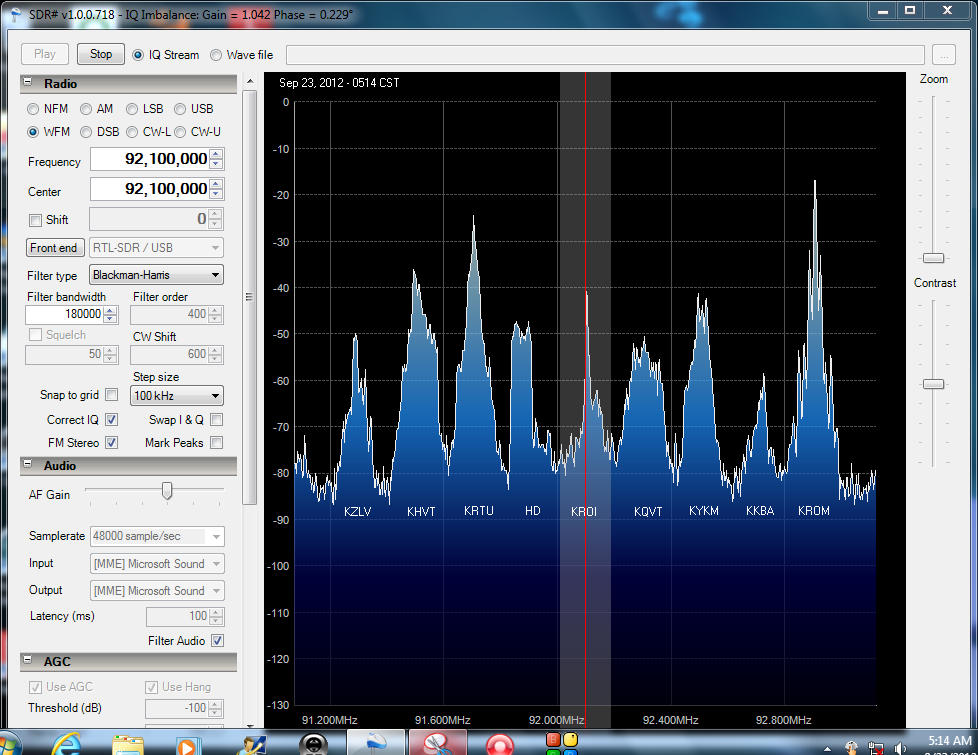 SDR# display 91.3-92.9 MHz - Sept 23, 2012
SDR# display 91.3-92.9 MHz - Sept 23, 2012
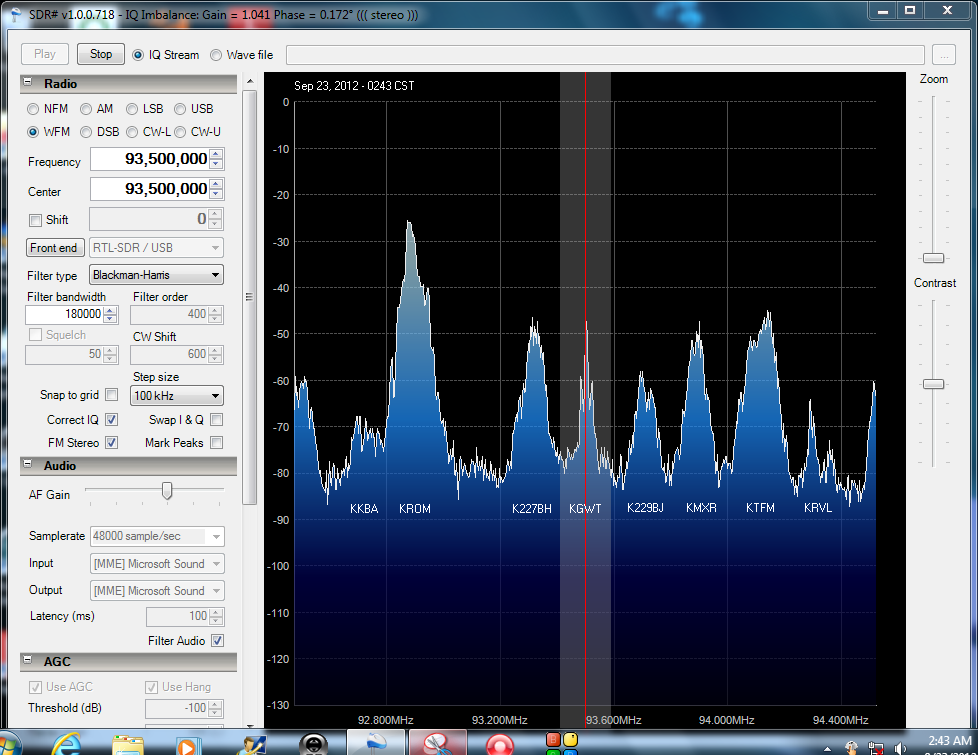 SDR# display 92.7-94.3 MHz - Sept 23, 2012
SDR# display 92.7-94.3 MHz - Sept 23, 2012
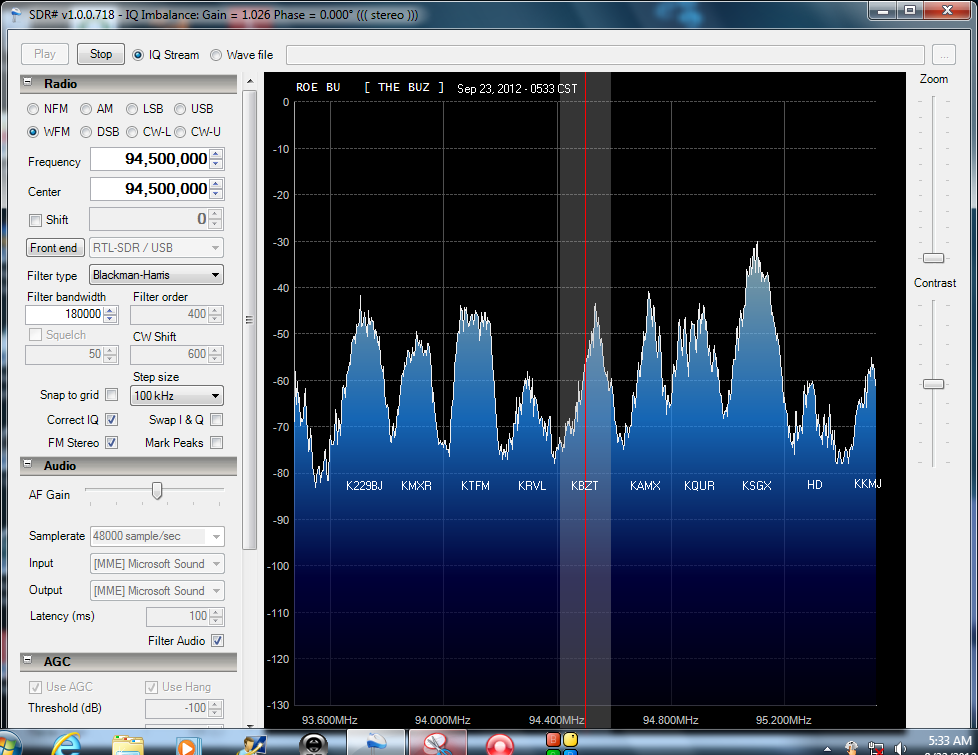 SDR# display 93.7-95.5 MHz - Sept 23, 2012
SDR# display 93.7-95.5 MHz - Sept 23, 2012
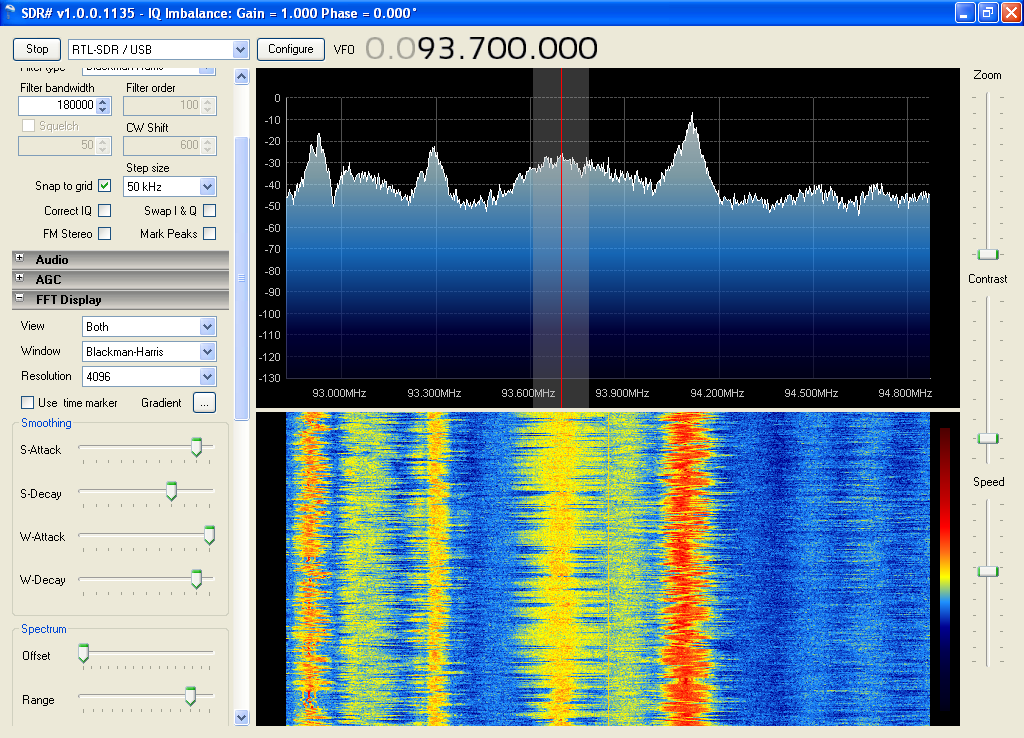 SDR# display Jul 8, 2013 - badly overdeviating by local 93.7 LPFM
SDR# display Jul 8, 2013 - badly overdeviating by local 93.7 LPFM
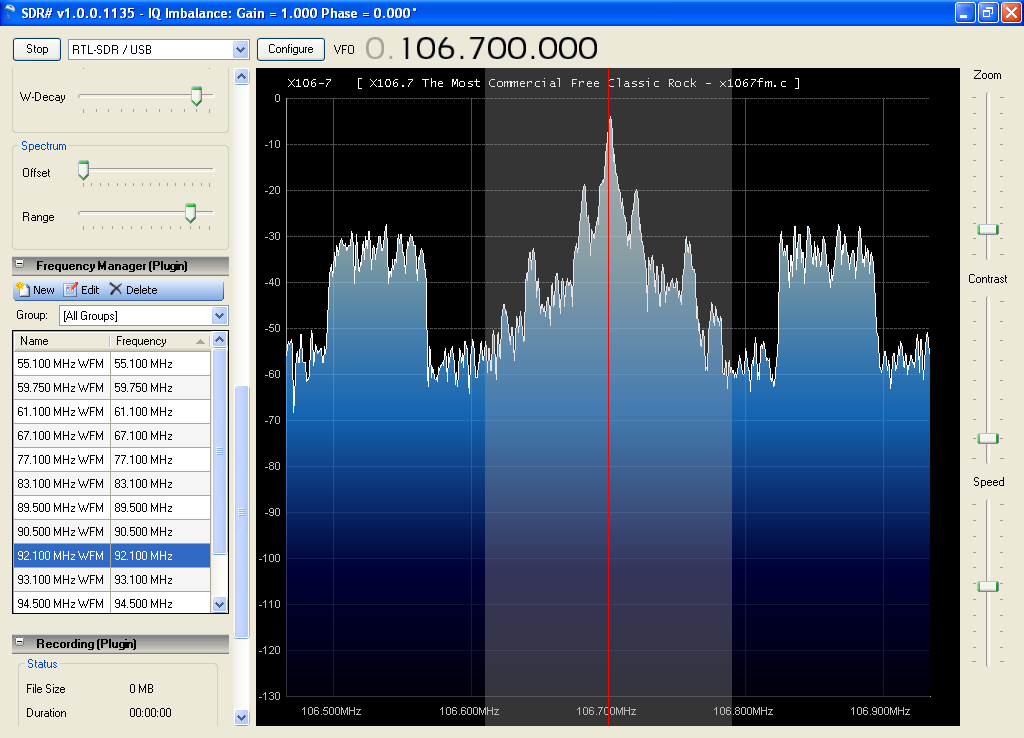 SDR# display Jul 9, 2013 - close-up of local 106.7 HD - note how sharp the sidebands fall off at 106.5 and 106.9
SDR# display Jul 9, 2013 - close-up of local 106.7 HD - note how sharp the sidebands fall off at 106.5 and 106.9